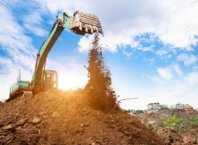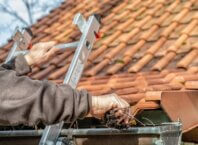When you see the stone or concrete structures located at the edges of the roads with some slopes in a channel formation so that the water on the road is easily drained out, then without a mistake you can term them as kerb and channel. They also work as a barrier for preventing the vehicles from leaving the road carriageway and staying on the road. They are intended to channelize the flow of water in a streamlined manner keeping the road out of water logging, but the rate of flow depends on the elevation and the dirt and debris that come flowing along with the water that is being drained by the natural slopes. The life span of these constructions is 50 to 80 years if maintained adequately at intervals. Many people term them as gutter.

The Construction
The kerb and channel construction can be done quickly with hands; however, with the growth of technology and inventions of machinery, these profiles are constructed now a day’s using modern, sophisticated machines. They are mostly made up of concrete castings, but many old cities have them made up of stones.
One can make various patterns of the kerb and channel depending on the need.
There are three types of patterns of kerb and channel which are:
- Barrier type
- Fully mountable type
- Semi-mountable type
Repairing Them
The stone built kerb and channel has more longevity than the concrete made ones as they are less prone to damage with water. However, in case of any damage either the stone block is removed and replaced by a new one or patchwork is done if they are made up of concrete.
The Types Of Channels
As the primary purpose of the channels is to streamline the water to the gutter, they can be of various designs depending on the need and one can construct them in designs. Two main designs of channels are:
- Dish channel: In dish channel the edges are round on near-side of the pavement. However, these types of channels may drain the water without making puddles, but they are less popular since many disabled persons moving on wheelchair find the edges challenging to manage.
- CD dish channels: Many cities have CD dish channels that are like the dish channels, but the only thing is that they are heavier and more extensive. Again, some may see straight square channels that are lower than the road, but they are also not very popular as they pose problems to the bikers who tend to drive along the sideways.
The Importance Of Kerb And Channel

- Without the kerb and chain, it is not possible to collect the stormwater from the road and lead them to the central gutter that leads ultimately to the underground drainage system.
- They are always used as the delineation between the main carriageway and the pavements and also work as a median to separate the motorbikes from other heavy vehicles.
- They act as the road dividers or the median strips to keep the vehicles on the right path and not to break the driving rules but to say on the main carriageway. Kerb and channel also give the edges of the road a solid structural binding and keeps the sides intact or the roads getting damaged as without them the edges stay open.
- The structural properties of the pavements also get protected using the kerb and channel.
Conclusion
Kerb and channel is an essential feature of any city as they drain away the storm or the road water from the road and channelize them to the gutter that ultimately meets the underground or the primary drainage system. They are used to prevent the streets from water damages as well as acting as a median for safe driving on the road or waking on the footpath.







